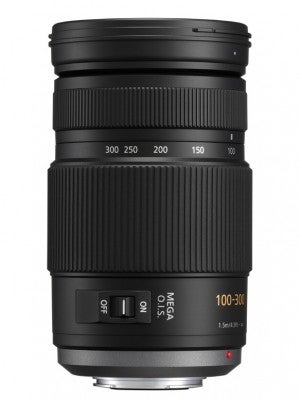With an equivalent length of 600mm at the telephoto end, this lens is great for getting in close
Panasonic Lumix G-Vario 100-300mm f/4-5.6 Mega OIS Review
It’s also impressive that Panasonic’s new G-Vario 100-300mm f/4-5.6 Mega OIS (Optical Image Stabilisation) zoom is little bigger than an old-fashioned full-frame 135mm prime lens. It is sleekly designed, with a broad zoom ring dominating the lens barrel. There is a narrower manual-focus ring towards the front of the lens and a two-position slider that activates the Mega OIS system at the rear.
Different image stabilisation modes can then be selected from within the host camera’s menu.
Partly due to its streamlined design and partly thanks to perfect positioning of the zoom ring, this is a lovely lens to use in the field. Sports, action and nature subjects are all well within its grasp thanks to a reliable AF system, and the optical image stabiliser does a superb job of steadying the viewfinder image.
The maximum aperture shrinks from f/4 at 100mm to f/5.6 at 300mm but this is a very acceptable limitation when the broader picture is taken into account. In particular, it is sobering to note that many 600mm f/4 lenses for full-frame cameras can sell for up to £10,000 and 400mm f/4 lenses aren’t far behind. Panasonic’s G-Vario 100-300mm, on the other hand, covers the same angle-of-view as a full-frame 200-600mm zoom yet costs under £500. Quite the difference.
Results are best at the shorter focal length, where best sharpness was achieved. Overall the zoom’s MTF results are variable – the results at 100mm are very good down to f/16 and at 200mm they are solid down to f/11. It’s just a shame that the longest 300mm focal-length, which is probably the best reason to buy this lens, coincides with the weakest MTF results and, therefore, least sharp results.
On the other hand, chromatic aberrations are all but absent, meaning there is only slight softness (rather than any colour fringing) to contend with at some of the available focal lengths. The host-body’s (we used a Panasonic GH1) Electronic Viewfinder (EVF) can become a little jerky when image stabilisation is enabled and even the latest high-resolution EVFs are still no match for the clarity of an optical viewfinder (though this is a symptom of the system rather than the lens).






